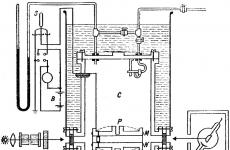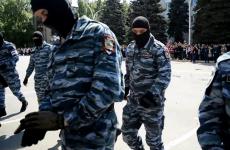Caucasus mountains in which countries. Geographical position of the Caucasus Mountains: description, photo. The famous ski resort "Krasnaya Polyana"
Geographical position
The Caucasus Mountains, stretching between the Black and Caspian Seas, are the natural border between Asia and Europe. They also separate the Near and Middle East. Due to their vast territory, they can be safely called "the country of ridges and uplands." There are two versions of the origin of the word "Caucasus". According to the first, that was the name of the epic king from the poem "Shahnameh" - Kavi-Kaus. The second hypothesis ascribes a name to the translation: "Supporters of Heaven." Geographically, the Caucasus is divided into two mountain systems: Big and Small. In turn, they also have subdivisions into ridges, chains and highlands.
Height of the Caucasus Mountains
The Caucasus is often included in the list of the "best". For example, the highest permanent village of Ushguli (Georgia) is located here. It lies on the slope of Shkhara (5068 m above sea level) and is included in the UNESCO list. Ushba acquired a gloomy fame among climbers as the most difficult summit to conquer, the "four-thousander". The mysterious Ararat is surrounded by biblical legends. There are also alpine lakes here - Ritsa, for example. And the Zeigalan waterfall (North Ossetia) is the largest in Russia (600 m). This attracts many climbers, sportsmen and just tourists to the region. The highest snow-capped peaks, glaciers shining in the sun, hard-to-reach passes, narrow gorges, waterfalls and turbulent, bubbling rivers - all these are the Caucasus Mountains. The height of the highest peaks - Elbrus (5642) and Kazbek (5034) - surpasses Mont Blanc (4810), which is considered the culmination point of Western Europe.
Myths and legends

The Caucasus is mentioned in the Bible. In the Book of Genesis, the ark of the righteous Noah stuck to Mount Ararat during the great flood, and from there a dove brought an olive branch. Jason sailed to the land of sorcerers Colchis (the Black Sea coast of the Caucasus) for the golden fleece. Here the eagle of Zeus punished Prometheus for giving people fire. The Caucasus Mountains also have their own regional legends. Every nation living on the slopes of this majestic country of glaciers and snowy peaks - and there are about fifty of them - composes legends and myths about them.
Geology

The Caucasus is a young mountain system. It was formed relatively recently - about 25 million years ago, in the Tertiary period. Thus, the Caucasus Mountains belong to the Alpine folding, but with insignificant volcanic activity. Eruptions have not been observed for a long time, but earthquakes are frequent. The biggest one last happened in 1988. Then 25 thousand people died in Spitak (Armenia). The main geological wealth of the mountains is oil. The reserves are estimated at 200 billion barrels.
Flora and fauna
The Caucasus Mountains are home to many species of wild animals. The gorges are inhabited by bears, golden eagles, chamois, wild boars, and argali are also found. There are also endemic species - species that, except for the Caucasus, cannot be found anywhere else on the planet. These include the local species of the leopard, lynx. Before the beginning of our era, manuscripts mention the presence of Caspian tigers and Asiatic lions. The biological diversity of this region is rapidly declining. The last Caucasian bison died out in 1926, the local subspecies - in 1810. In this region of subtropical forests, alpine meadows and alpine lichens, 6,350 plant species have been recorded. More than one and a half thousand of them are endemic.
Russia is a vast country. It is not surprising that it contains all the terrain reliefs that are only found in nature. Mountain ranges and peaks occupy a special place among the plains and steppes. They attract travelers and explorers, scientists and tourists, archaeologists and climbers. What mountains are there in Russia? What you should pay attention to?
In contact with
Origin
Areas of mountainous regions are formed as a result of complex processes. In the crust of the earth tectonic crumbling, faults and fractures of rocks occur. They are carried out continuously during the entire existence of the planet, in ancient time eras, such as the Paleozoic, Mesozoic or Cenozoic. Those who are in the Far East, Kamchatka and the Kuriles are considered young. Seismic activity and volcanoes erupt frequently in these areas.
In the European part of Russia there is a large plain, which has a geographical border in the east in the form. These are unique natural sculptures that arouse national pride.
Interesting! Only in the Urals is there a natural reserve that protects mineralogy. Ilmensky place has a huge variety of minerals, unique and amazing in their structure and structure.
In the Urals, there are many tourist centers, ski resorts are located on them. Climbers conquer these majestic heights.
Russian mountainous terrain options
- Baikal and Transbaikalia;
- Altai;
- Sayan;
- the Verkhoyansk and Stanovoy ridges;
- Chersky ridge.
Each of the areas is interesting and beautiful, the names of the mountains in their composition are unique and owe their origin to the peoples who inhabit the nearby territories. These lands beckon with harsh conditions, tests for body and spirit. Altai is one of the most popular tourist destinations. But the Chersky ridge is on the map, but so far it is little studied, but experts assume that it will become an attractive place for travelers.

Variety of territories
The Far East is a region consisting mainly of mountainous terrain. The southern territorial part consists of medium and low, but in the north there are high ridges. The highest point in the Far East - Klyuchevskaya Sopka is a volcano with a height of 4750 m.
The mountains in this region are constantly growing, they are located at the junction of plates that are in motion, therefore there are many volcanoes. In addition to them, there is a unique object for which it is worth going to Kamchatka - the Valley of Geysers.
Important! Sikhote Alin, located in the Primorye region, is part of the World Heritage Site. This system is rich not only, but also in a variety of flora and fauna. This point of Russia on the map is the birthplace of the Far Eastern leopard and the Amur tiger.
Caucasus
The Caucasus deserves a separate description. This massif stretches from the Black to the Caspian, its length is more than 1200 km. The Caucasian ridge is divided into the Northern part and the Transcaucasia.
The height of the Caucasus Mountains fluctuates along the entire length of the ridge. It is he who has the highest point of the whole country and Europe- this is Elbrus. The mountain was formed as a result of a volcanic eruption. It has an altitude of 5600 m. Elbrus is located in such a place that it can be seen from all sides. Travelers approached him at the beginning of the 19th century. At its peak, the temperature does not rise above -14 degrees. Snow falls on the mountain all the time, which makes its snow cap ideal. This peak feeds the two largest - Kuban and Terek.

In the Greater Caucasus, there are three highest mountains of Russia:
- Elbrus;
- Dykhtau;
- Kazbek.
Interesting! In addition to the Caucasus Mountains, Kamchatka and Altai are famous for large hills, among them: Klyuchevskaya Sopka, Belukha, Ichinskaya Sopka.
10 high mountains
A little more detail about each of the largest hills:
- It is already clear about Elbrus, it is an inactive volcano, which is part of the national park. Its height is 5642 meters.
- Dykhtau is the second largest mountain peak in the country. This mountain as part of the Caucasian ridge rises to 5200 m. The ascent to this peak was first carried out only in 1888.
- The third largest mountain in the country located on the border of Russia and Georgia. This is Pushkin's peak. It rises next to Dykhtau in the center of the Caucasus ridge. His conquest took place in 1961. It is interesting that this ascent was made not by professionals, but by the footballers of the Spartak club. The height of the peak is 5100 meters.
- Kazbek rises a little lower, namely a hundred meters. It is also related to the Greater Caucasus, located in its lateral part in the Khokh mountain range. Three London climbers conquered this peak in the middle of the 19th century.
- Near the border of Georgia and Kabardino-Balkaria is the fifth highest peak in Russia called Gestola. At its top, glaciers have accumulated that date back to the Paleozoic era. The most famous of them is Adishi.
- The sixth in the top ten is the peak of Shota Rustaveli. Although the name on the map of the peak is of a famous person of Georgian origin, it still refers to the Russian part of the Caucasus. The peak is on the border, it is not surprising that both countries claim the rights to it... The mountain has 4895 meters.
- Slightly lower (4780 meters) is Mount Dzhimara. It is located in Alania, at the very border of Russia and Georgia. Again, this is part of the Greater Caucasus.
- In ninth place is Mount Sauhokh, again from the Greater Caucasus, located in North Ossetia. The height of the summit is 4636 meters. She belongs to the unconquered peaks, just like Kukurtli-Kolbashi. This mountain completes the list of the ten largest peaks in Russia, its height is 4324 meters.
Interesting! So far, no one has conquered the rock formations that are on the 8th, 9th and 10th places on the list. This can push travelers to new exploits.
Lowest mountains
In addition to the highest mountain peaks, it is interesting to know the rating of the lowest ones. Such a concept as the lowest mountain is very difficult. It turns out that it is not so easy to name it. Only what is higher can be called mountains, which means that they have a height above sea level of more than 500 meters. But the mountain ranges can vary in height and have numbers in their composition much lower.

It is considered to be the lowest elevations of Russia Khibiny mountain system... This area is located on the Kola Peninsula, it is not difficult to get there, like to other mountain ranges. The highest point is 1201, this is Mount Yudichvumchorr, the names of mountains or peaks are slightly less - Chasnachorr (1189 m) and Putelichorr (1111 m )
Output
Khibiny contains more than 800 types of minerals, some of them are found only in these places. The most famous of these is apatite. It is used as a fertilizer.

A report about the Caucasus Mountains, a stately landmark and a highlight of the Caucasus, is presented in this article.
Message about the Caucasus Mountains
Caucasus mountains geographical location
They stretch between Asia and Europe, the Middle and Near East. The mountains of the Caucasus region are divided into 2 systems - the Lesser and Greater Caucasus. The Greater Caucasus is located almost to Baku from Taman and includes the Western, Central and Eastern Caucasus. But the Lesser Caucasus is a mountain range near the Black Sea. They are located between the Black Sea and Caspian coasts, covering the territories of such countries - South Ossetia, Russia, Abkhazia, Armenia, Georgia, Turkey and Azerbaijan.
Translated, their name means "mountains hold the sky." The length of the Caucasus Mountains is 1,100 km, and their width is 180 km. The most famous and highest peaks of the system are Mount Elbrus and Kazbek.
How old are the Caucasus Mountains?
The Caucasian mountain system is the same age as the Alps and has a 30-thousand-year history inscribed in Greek myths and biblical lines. According to legend, when Noah released a dove from the ark in search of land, he brought Noah a twig from the mountains of the Caucasian system. And in the myths it is indicated that Prometheus is chained here, the man who gave fire to people.
What do the Caucasus Mountains look like?
The mountains are fraught with a lot of unusual things. Preserved glaciers can be found on their tops. Until now, earthquakes are observed here, since the Caucasus Mountains are young from a geological point of view.
Their appearance is due to the relief, which is represented by different forms. Mountain peaks with sharp peaks shot up to the sky. With their outlines, they look like the walls of a castle with towers, then like the Egyptian pyramids. In the mountains there are also glaciers, rivers and areas with a surface severely damaged by wind erosion.
Climate
The climate of the Caucasus mountain system is quite diverse. These places are characterized by pronounced zoning. These mountains are a natural barrier that prevents the movement of air masses, thereby determining the diversity of the climate. The southern and western slopes receive much more precipitation than the northern and eastern slopes. The Caucasus Mountains are located in almost all climatic zones: from humid subtropics with humid and warm winters, dry hot summers to a dry continental climate, turning into a semi-desert in the east.
Near the foothills, there are cold, snowy winters with dry summers, and the higher you go to the mountains, the lower the temperature. At an altitude of 3.5 thousand km. it reaches -4 0 С.
Flora and fauna
The mountains of the Caucasus are inhabited by unique animals. Among them are chamois, wild boars, mountain goats, foxes and bears, the mountain jerboa and gopher from Asia Minor, and bears and leopards live in remote places. On the way from the bottom to the top, meadow alpine grasses and coniferous forests grow, which "feed" on rivers, lakes, waterfalls, springs with mineral waters.
- For the first time, a man climbed the highest peak of the Caucasus Mountains system on July 22, 1829.
- There are many species of invertebrates in the Caucasus, for example, about 1000 species of spiders still live there.
In the Caucasus 6349 species of flowering plants, including 1600 native species.
In the Caucasus many endemic representatives- slightly less than 1600 species of flora, 32 species of mammals and 3 species of birds.
- Permafrost starts at altitude 3000-3500 m.
We hope that the report on the Caucasus Mountains helped you prepare for the lesson. And you can leave your message about the Caucasus Mountains through the comment form below.
It is divided into two mountain systems: the Greater Caucasus and the Lesser Caucasus. The Caucasus is often divided into the North Caucasus and Transcaucasia, the border between which is drawn along the Main, or Vodorazdelny ridge of the Greater Caucasus, which occupies a central position in the mountain system. The Greater Caucasus stretches for more than 1,100 km from northwest to southeast, from the Anapa region and the Taman Peninsula to the Absheron Peninsula on the Caspian coast, near Baku. The Greater Caucasus reaches its maximum width in the region of the Elbrus meridian (up to 180 km). In the axial part there is the Main Caucasian (or Vodorazdelny) ridge, to the north of which there are a number of parallel ridges (mountain ranges), including a monoclinal (cuest) character (see Greater Caucasus). The southern slope of the Greater Caucasus for the most part consists of en-echelon ridges adjacent to the Greater Caucasus Range. Traditionally, the Greater Caucasus is divided into 3 parts: the Western Caucasus (from the Black Sea to Elbrus), the Central Caucasus (from Elbrus to Kazbek) and the Eastern Caucasus (from Kazbek to the Caspian Sea).
The most famous peaks - Mount Elbrus (5642 m) and Mount Kazbek (5033 m) are covered with eternal snow and glaciers. The Greater Caucasus is a region with a large modern glaciation. The total number of glaciers is about 2,050, with an area of about 1,400 km 2. More than half of the glaciation of the Greater Caucasus is concentrated in the Central Caucasus (50% of the number and 70% of the area of glaciation). The major centers of glaciation are Mount Elbrus and the Bezengi wall (with the Bezengi glacier, 17 km). From the northern foot of the Greater Caucasus to the Kumo-Manych depression, the Ciscaucasia stretches with vast plains and uplands. To the south of the Greater Caucasus are the Colchis and Kura-Araks lowlands, the Inner Kartli plain and the Alazan-Avtoran valley [the Kura depression, within which the Alazan-Avtoran valley and the Kura-Araks lowland are located]. In the southeastern part of the Caucasus - Talysh mountains (up to 2477 m) with the adjacent Lankaran lowland. In the middle and in the west of the southern part of the Caucasus, there is the Transcaucasian Highlands, consisting of the ranges of the Lesser Caucasus and the Armenian Highlands (Mount Aragats, 4090 m). The Lesser Caucasus is connected to the Greater Caucasus by the Likhsky ridge, in the west it is separated from it by the Colchis lowland, in the east by the Kura depression. The length is about 600 km, the height is up to 3724 m. Mountains near Sochi - Achishkho, Aibga, Chigush (Chugush, 3238 m), Pseashkho and others (resort area Krasnaya Polyana) - will host the participants of the 2014 Winter Olympic Games.





Here is a detailed map of the Caucasus Mountains with the names of cities and towns in Russian. Move the map by holding it with the left mouse button. You can move around the map by clicking on one of the four arrows in the upper left corner.
You can change the scale using the scale on the right side of the map or by turning the mouse wheel.
In which country is the Caucasus Mountains
Caucasus Mountains are located in Russia. This is a wonderful, beautiful place with its own history and traditions. Coordinates of the Caucasus Mountains: north latitude and east longitude (show on a large map).
Virtual walk
The figurine of the "little man" above the scale will help you take a virtual walk through the cities of the Caucasus Mountains. By clicking and holding the left mouse button, drag it to any place on the map and you will go for a walk, while inscriptions with the approximate address of the area will appear in the upper left corner. Choose the direction of movement by clicking on the arrows in the center of the screen. The "Satellite" option at the top left allows you to see a relief image of the surface. In the "Map" mode, you will get the opportunity to familiarize yourself in detail with the roads of the Caucasus Mountains and the main attractions.
antiqus classiqus
Caspian mountains
- Caspian mountains
- and the gate (Greek Κασπία ὄρη, Latin Caspii monies).
- 1. The funeral mountains between Armenia and Albania on the one hand and Media on the other (now Qaradagh, Siah-Koh, i.e. Black and Talysh mountains). In a broad sense, this name refers to the entire chain of mountains running south of the river. Arak (from the Kotur River to the Caspian Sea). Here were the so-called.
The Caspian Gate (Kaspiapils), a narrow mountain pass 8 Roman miles long and one chariot wide (now the Chamar pass between Narsa-Koh and Siah-Koh). This was the only route from Northwest Asia to the northeastern part of the Persian state, because the Persians locked this passage with an iron gate, which was guarded by guards (claustra Caspiarum).
The Caucasus Mountains are a mountain system between the Black and Caspian Seas.
It is divided into two mountain systems: the Greater Caucasus and the Lesser Caucasus.
The Caucasus is often divided into the North Caucasus and Transcaucasia, the border between which is drawn along the Main, or Vodorazdelny ridge of the Greater Caucasus, which occupies a central position in the mountain system.
The most famous peaks are Mount Elbrus (5642 m) and Mount Elbrus.
Kazbek (5033 m) is covered with eternal snow and glaciers.
From the northern foot of the Greater Caucasus to the Kumo-Manych depression, the Ciscaucasia stretches with vast plains and uplands. To the south of the Greater Caucasus are the Colchis and Kura-Araks lowlands, the Inner Kartli plain and the Alazan-Avtoran valley [the Kura depression, within which the Alazan-Avtoran valley and the Kura-Araks lowland are located]. In the southeastern part of the Caucasus - the Talysh mountains (up to 2492 m) with the adjacent Lankaran lowland. In the middle and in the west of the southern part of the Caucasus, there is the Transcaucasian Highlands, consisting of the ranges of the Lesser Caucasus and the Armenian Highlands (Mount Aragats, 4090 m).
The Lesser Caucasus is connected to the Greater Caucasus by the Likhsky ridge, in the west it is separated from it by the Colchis lowland, in the east by the Kura depression. The length is about 600 km, the height is up to 3724 m.
Mountains near Sochi - Aishkho (2391 m), Aibga (2509 m), Chigush (3238 m), Pseashkho and others.
The location of the Caucasus Mountains on the world map
(the boundaries of the mountain range are approximate)
Hotels in Adler from 600 rubles per day!
Caucasus mountains or Caucasus- mountain system between the Black and the Caspian Seas with an area of ~ 477488 m2.
The Caucasus is divided into two mountain systems: the Greater Caucasus and the Lesser Caucasus, very often the mountain system is subdivided into the Ciscaucasia (North Caucasus), the Greater Caucasus and Transcaucasia (South Caucasus). The state border of the Russian Federation with the countries of Transcaucasia runs along the ridge of the Main Ridge.
Highest peaks
The largest mountain peaks of the Caucasus Mountains (indicators of various sources may vary).
|
Height, in m |
Notes (edit) |
|
| Elbrus | 5642 m | highest point of the Caucasus, Russia and Europe |
| Shkhara | 5201 m | Bezengi, the highest point of Georgia |
| Koshtantau | 5152 m | Bezengi |
| Pushkin Peak | 5100 m | Bezengi |
| Dzhangitau | 5085 m | Bezengi |
| Shkhara | 5201 m | Bezengi, the highest point of Georgia |
| Kazbek | 5034 m | Georgia, Russia (the highest point of North Ossetia) |
| Mizhirgi West | 5025 m | Bezengi |
| Tetnuld | 4974 m | Svaneti |
| Katyn-tau or Adish | 4970 m | Bezengi |
| Shota Rustaveli Peak | 4960 m | Bezengi |
| Gestola | 4860 m | Bezengi |
| Jimara | 4780 m | Georgia, North Ossetia (Russia) |
| Ushba | 4690 m | |
| Tebulosmta | 4493 m | highest point of Chechnya |
| Bazarduzu | 4485 m | the highest point of Dagestan and Azerbaijan |
| Shang | 4451 m | highest point of Ingushetia |
| Adai-Hoh | 4408 m | Ossetia |
| Diklosmta | 4285 m | Chechnya |
| Shahdag | 4243 m | Azerbaijan |
| Tufandag | 4191 m | Azerbaijan |
| Shalbuzdag | 4142 m | Dagestan |
| Aragats | 4094 m | highest point of Armenia |
| Dombay-Ulgen | 4046 m | Dombay |
| Zilga-Hoh | 3853 m | Georgia, South Ossetia |
| TASS | 3525 m | Russia, Chechen Republic |
| Tsitelikhati | 3026.1 m | South Ossetia |
Climate
The climate of the Caucasus is warm and mild, with the exception of the high mountains: at an altitude of 3800 m, the border of "eternal ice" passes. There is a lot of precipitation in the mountains and foothills.
Flora and fauna
The vegetation of the Caucasus is distinguished by its rich species composition and diversity: here grow oriental beech, Caucasian hornbeam, Caucasian linden, noble chestnut, boxwood, cherry laurel, Pontic rhododendron, some types of oak and maple, wild persimmon, as well as subtropical tea bush and citrus fruits.
In the Caucasus, there are brown Caucasian bears, lynxes, forest cat, foxes, badgers, martens, deer, roe deer, wild boars, bison, chamois, mountain goats (rounds), small rodents (forest dormouse, vole). Birds: magpies, blackbirds, cuckoos, jays, wagtails, woodpeckers, owls, owls, starlings, crows, goldfinches, kingfishers, tits, Caucasian black grouse and mountain turkeys, golden eagles and lambs.
Population
More than 50 peoples live in the Caucasus (for example: Avars, Circassians, Chechens, Georgians, Lezgins, Karachais, etc.) who are designated as Caucasian peoples. They speak Caucasian, Indo-European and Altai languages. Largest cities: Sochi, Tbilisi, Yerevan, Vladikavkaz, Grozny, etc.
Tourism and rest
The Caucasus is visited for recreational purposes: on the shores of the Black Sea there are many sea resorts, the North Caucasus is popular for its balneological resorts.
Rivers of the Caucasus
Rivers originating in the Caucasus belong to the basins of the Black, Caspian and Azov seas.
- Bzyb
- Kodori
- Ingur (Inguri)
- Rioni
- Kuban
- Podkumok
- Araks
- Liakhva (Big Liakhvi)
- Samur
- Sulak
- Avar Koisu
- Andean koisu
- Terek
- Sunzha
- Argun
- Malka (Kura)
- Baksan
- Chegem
- Cherek
Countries and Regions
The following countries and regions are located in the Caucasus.
- Azerbaijan
- Armenia
- Georgia
- Russia: Adygea, Dagestan, Ingushetia, Kabardino-Balkaria, Karachay-Cherkessia, Krasnodar Territory, North Ossetia-Alania, Stavropol Territory, Chechnya
In addition to these countries and regions, there are partially recognized republics in the Caucasus: Abkhazia, South Ossetia, Nagorno-Karabakh.
Largest cities of the Caucasus
- Vladikavkaz
- Gelendzhik
- Hot key
- Grozny
- Derbent
- Yerevan
- Essentuki
- Zheleznovodsk
- Zugdidi
- Kislovodsk
- Kutaisi
- Krasnodar
- Maykop
- Makhachkala
- Mineral water
- Nazran
- Nalchik
- Novorossiysk
- Pyatigorsk
- Stavropol
- Stepanakert
- Sukhum
- Tbilisi
- Tuapse
- Tskhinval
- Cherkessk
Cheap flights to Sochi from 3000 rubles.
Where is it and how to get there
Address: Azerbaijan, Armenia, Georgia, Russia






